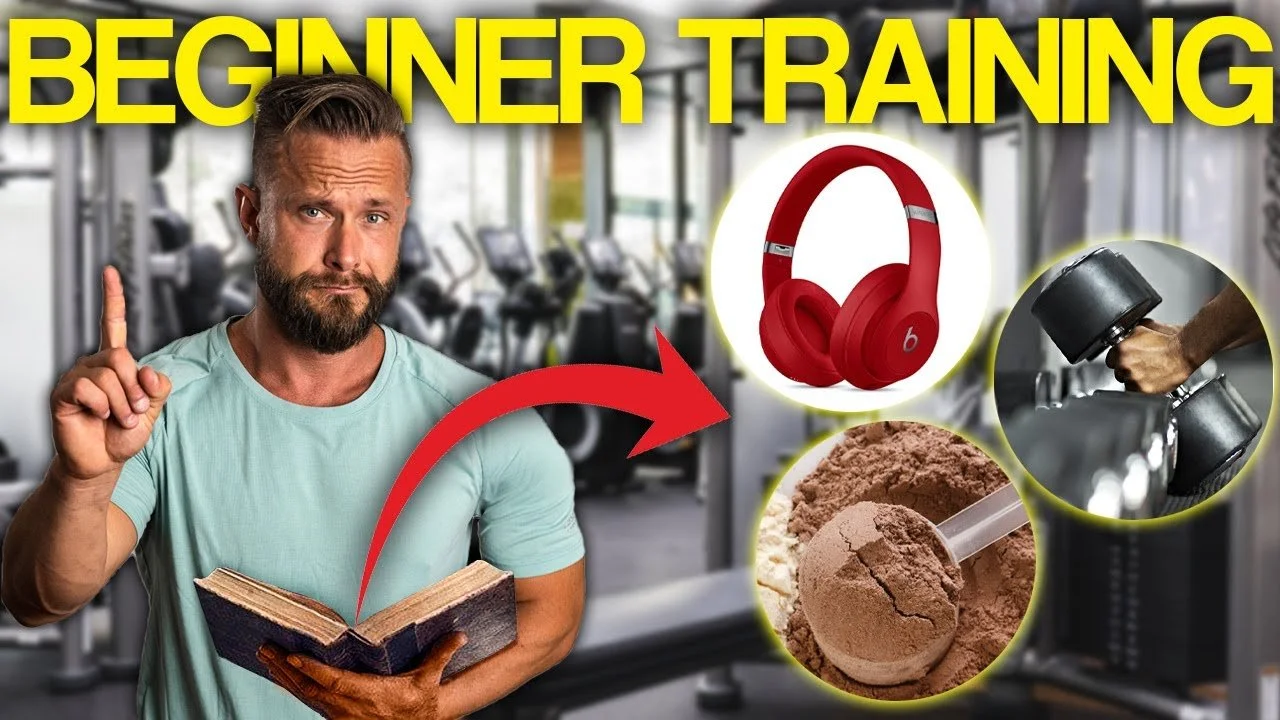Your Guide To Creating The Perfect Workout Plan
Whether you’re just starting out or looking to refine your training routine, creating a structured workout plan is key to achieving your fitness goals.
Today, I’ll share my philosophy on programming and guide you through building a plan tailored to your time, experience, and fitness aspirations.
Step 1: Define Your Time Commitment
The first question to ask yourself is: How much time can you invest in training?
Your available time determines the structure of your workout plan. If you have a lot of time, you can split your training sessions, focusing on specific muscle groups or even different types of exercise. On the other hand, if your schedule is tight, you might need to combine modalities or focus on full-body workouts every session.
For example:
Limited Time: Opt for full-body workouts.
More Time: Consider splitting your sessions, such as upper body one day and lower body the next.
Step 2: Assess Your Experience Level
How much experience do you have in the gym?
If you’re a beginner, it’s essential to start with the basics. Focus on building a strong foundation with proper form and consistency. It’s not about going extreme at the start but creating good habits and easing into your routine.
Step 3: Align Your Workouts with Your Goals
Ask yourself these three important questions:
What do I enjoy doing?
What does my body need?
What do I want to improve or master?
These answers will help shape your workout plan. Let’s break it down with an example:
What I like: Strength training.
What my body needs: Cardio for heart health.
What I want to master: Golf.
The synergy between these areas is where the magic happens. For instance, strength training can include exercises that enhance your cardio capacity or improve your golf swing. Tailor your routine to incorporate elements of all three for a balanced approach.
Step 4: Choose the Right Program Structure
Your workout plan should ensure that all muscle groups are worked 1-2 times per week, depending on your schedule. Here’s how you can structure your plan based on the number of days you can train:
2 Days per Week
Focus on full-body workouts for both sessions. This ensures all muscle groups are targeted within a limited timeframe.
3 Days per Week
Option 1:
Day 1: Upper Body
Day 2: Lower Body
Day 3: Upper Body again (Alternate in the following week to emphasize lower body twice).
Option 2:
Day 1: Lower Body
Day 2: Push and Pull (Chest and Back)
Day 3: Arms and Shoulders
This approach targets each muscle group more intensely and allows for adequate recovery between sessions.
4 Days per Week
Here’s my personal favorite split:
Day 1: Legs
Day 2: Chest and Front Shoulders
Day 3: Back and Rear Shoulders
Day 4: Arms (Biceps and Triceps)
I always include high-intensity interval training (HIIT) and core work in every session to ensure a comprehensive workout.
Step 5: Prioritize Proper Order of Exercises
The sequence of exercises in your workout plan matters. You should consider factors like muscle recovery and workout intensity. For example:
Train larger muscle groups (e.g., chest, back, legs) before smaller ones (e.g., arms).
Avoid scheduling arms the day before back or chest, as your arms assist in those movements. Instead, plan arm day after chest and back days.
For instance:
Day 1: Legs (biggest muscle group, best done with the most energy early in the week).
Day 2: Chest and Front Shoulders.
Day 3: Back and Rear Shoulders.
Day 4: Arms, before transitioning back to legs.
This structure ensures recovery while maximizing performance on heavier lifts.
Step 6: Target Muscle Groups Effectively
For larger muscle groups, I include multiple exercises to target different areas and movement patterns. For example:
Chest Day: Combine bench press, fly variations, and incline press to train the muscle in different intervals and angles.
Back Day: Include pull-ups, rows, and lat pulldowns for comprehensive development.
Targeting muscles from multiple angles activates synergist muscles (muscles that assist in the movement) and ensures well-rounded strength development.
Step 7: Incorporate Cardio and Core
I recommend adding cardio and core exercises to every workout session. These elements:
Improve overall fitness and endurance.
Support functional strength.
Enhance fat loss when paired with proper nutrition.
Switch up your core routine to target all areas, including obliques, transverse abdominis, and rectus abdominis (your six-pack muscles).
Step 8: Build in Flexibility
Life happens, and sometimes your workout schedule needs to adapt. While consistency is key, don’t stress if you have to take an unscheduled rest day. Listen to your body and prioritize recovery when needed.
Remember, the perfect workout plan is one you can stick to, not a rigid set of rules that stresses you out.
Tips for Beginners
Start Slow: Begin with 3 sessions a week and gradually increase as you build endurance and strength.
Focus on Form: Proper technique is critical for preventing injuries and targeting the right muscles.
Consistency Over Perfection: Show up regularly, even if some days are less intense than others.
Why Nutrition Matters
No workout plan is complete without proper nutrition. Whether your goal is to gain muscle or lose fat, what you eat plays a significant role. Here’s my philosophy:
Protein: Essential for muscle repair and growth.
Carbs and Fat: Adjust these based on your goals—higher for gaining muscle, lower for losing fat.
Balance: 17 out of 20 meals should align with your goals; enjoy 3 meals guilt-free.
Nutrition fuels your workouts and recovery, so don’t overlook it. Check out my other videos for more on how to align your diet with your fitness goals.
A Sample Week
To tie everything together, here’s a sample workout plan based on my 4-day split:
Day 1: Legs
Squats
Deadlifts
Lunges
Calf Raises
HIIT Cardio (Treadmill Sprints)
Day 2: Chest and Front Shoulders
Bench Press
Incline Dumbbell Press
Cable Flys
Front Raises
Core: Plank Variations
Day 3: Back and Rear Shoulders
Pull-Ups
Seated Rows
Rear Delt Flys
Straight-Arm Pulldowns
HIIT Cardio (Rowing Intervals)
Day 4: Arms
Bicep Curls
Tricep Dips
Skull Crushers
Hammer Curls
Core: Russian Twists
Take Action NOW
Creating the perfect workout plan isn’t about following a one-size-fits-all approach. It’s about tailoring your program to fit your goals, schedule, and experience level.
Start with a realistic commitment, focus on form, and integrate exercises that align with what you enjoy, need, and want to master. Pair your training with balanced nutrition, stay consistent, and you’ll see progress over time.
For more detailed programs, tips, and guidance, check out the Magnus Method App. Remember, motivation is fleeting, but discipline and accountability are what truly lead to success.




























